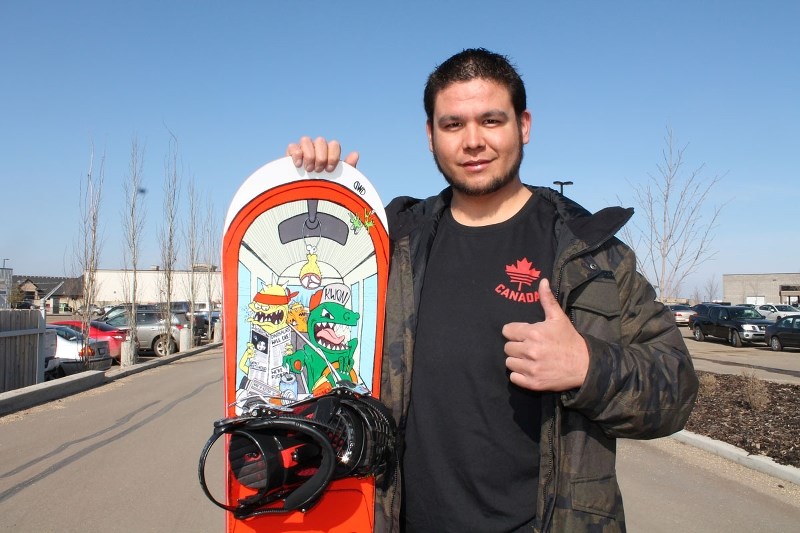Rob Nepinak is more than a medal contender Shreddin’ The Gnar at the 18th Winter Deaflympics.
The St. Albert snowboarder is also breaking down barriers for the hearing impaired as an Aboriginal Canadian.
“I want to become a role model for deaf youth and First Nations aspiring to become elite level athletes,” wrote Nepinak in an email interview with the Gazette.
The Deaflympics start next weekend in Khanty-Mansiysk and Magnitogorsk, Russia.
“I’m very stoked! It’s an honour representing Canada,” said Nepinak, who leaves today for Toronto for two days of training with his snowboarding teammates at the Beaver Valley Ski Club in Markdale, Ont., before departing for Russia.
He will tear it up in slopestyle and snowboard cross as those events make their Deaflympics debut.
“I want to go big, have fun and inspire a thousand deaf First Nation people like me and, of course, get the medal,” Nepinak said. “It has been my dream for so long to go to the Deaflympics and win. I want to become an inspiration for my two boys (seven-year-old Levi and two-year-old Robert).”
Big air tricks and flips are Nepinak’s forte in the sport he got hooked on 16 years ago.
“It’s so extreme and I love the feeling of the adrenaline rush. When I ride my brain just shuts down.”
Nepinak was selected to the Canadian snowboarding team of five males and one female after attending tryouts at Sunshine Village last year.
“They were screening speed, freestyle tricks and fitness abilities.”
He has been riding the slopes at Rabbit Hill Snow Resort leading up the Deaflympics.
“I would like to give a shout out and thank them for sponsoring me and also allowing me to train there prior to the Deaflympics.”
Nepinak, 30, describes himself as culturally deaf.
“I’m just like everybody else. We are no different,” said the Winnipeg native, who has a younger deaf sister and his older sister is hard of hearing.
“This might come across as a shock to you and everyone else but I can drive, hold down a job and take care of my two little boys.”
The Deaflympics, previously called the World Games for the Deaf and International Games for the Deaf, are an International Olympic Committee sanctioned event where deaf athletes compete at an elite level but unlike the athletes in the IOC-sanctioned Olympics, Paralympics and the Special Olympics, the Deaflympians can’t be guided by sounds, like the starter’s gun, bullhorn commands or referee’s whistle.
It’s also a tradition for spectators not to cheer or clap but to wave with both hands.
The Deaflympics have been organized by the International Committee of Sport for the Deaf since the first Summer Games in 1924 in Paris, featuring 148 athletes from nine European nations.
The event has been held every four years, except for the outbreak of the Second World War and the 2011 cancellation of the Winter Deaflympics in Vysoke Tatry, Slovakia.
The first Winter Deaflympics were staged in 1949 in Seefeld, Austria and this year’s disciplines are alpine skiing, curling, cross-country skiing, hockey and snowboarding.
To qualify for the Deaflympics, athletes must have a hearing loss of at least 55 DP (distortion product) in what is called their better ear. Hearing aids, cochlear implants and similar devices are prohibited in competitions in order for all athletes to be on the same level.
“Actually there are no obstacles at all as there are no communication barriers at all,” said Nepinak, who plans on attending a heavy equipment operator school in Innisfail after the Deaflympics.
“There are 450 athletes attending this international event who are deaf. Plus, the volunteers, coaches and referees are deaf as well, creating a beautiful and dynamic environment for everyone to communicate using our own sign languages. As a matter of fact, there are different sign languages from all over the world and when people from all over the world come to the same place we use International Sign (not International Sign Language), which is a universal communication system where it allows us all to communicate without any obstacles. Hence, there are no obstacles at all.”




